One of the many elements required for operating a successful online business is a great user experience. You must adhere to current technological advances, such as Magento’s progressive web apps, to keep up with this. So what is Magento PWA, how does Magento PWA works, what are its benefits and requirements, which websites should integrate PWA, how to build Magento PWA, and how does Magento PWA cost? Let’s investigate that information through our article today.
Table of Contents
What is Magento PWA?
Magento Progressive Web App is an open-source eCommerce platform for developing a Progressive Web Application (PWA) which is a form of software combining functions from apps and websites. It combines modern web technologies such as JavaScript and HTML5 with the power of Magento’s commerce-focused features. Building PWAs in Magento allows merchants to deliver engaging, app-like experiences over the web while taking advantage of features like browser caching and push notifications. Magento PWA provides a comprehensive set of tools and libraries to help developers create PWAs quickly and efficiently, allowing merchants to provide a better user experience for their customers.
How Does a Magento PWA Work?
PWAs do nearly the same tasks as traditional websites but with modern features and technologies. The open-source HTML, CSS, and JavaScript required by PWA technology can all be installed on your device, including the app icon and shortcut. PWAs also download updates each time a user launches it in the background, so your users will also have access to newly added features as you upgrade your stores, all without explicitly completing any kind of technical updates. The PWA can verify the capabilities of the user’s device and load additional data in the background when the user interacts with your stores, thus creating scenarios for anticipating future interactions, giving the impression that the application is more capable.
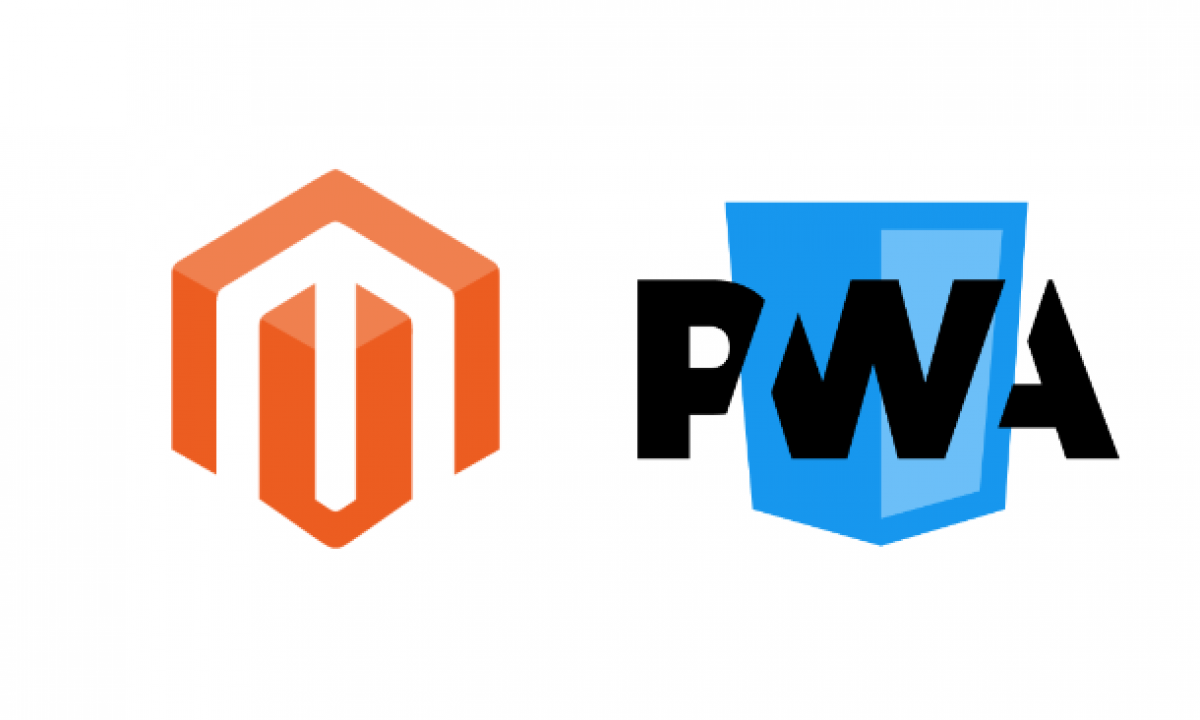
When being built on the Magento platform, your PWA stores can take full advantage of this robust eCommerce platform to power your online stores to achieve your desired UX optimization level. We all know how huge the potential of a Magento website is: it can handle millions of traffic, thousands of products, and orders each day with ease. Those do not include the fast loading speed, the secured system, and the advanced SEO optimization tools that Magento offers by default. With a proper PWA being built on a Magento base, you should focus on inventory management and marketing activities much more, as your worries about your website’s performance and conversion capabilities can be put down for good.
What are the Benefits of Magento PWA for eCommerce Stores?
Improving Shoppers’ Experience: Loading Speed
The benefit of Magento PWA for eCommerce stores is that it can drastically improve the loading speed of a website. It works by using technologies such as Service Workers, App Shells, and Web Push API to minimize network requests and cache content for faster delivery. This helps to create an optimal shopping experience for customers who will benefit from improved page load times, faster navigation, and improved response rates.

Additionally, customers benefit from a mobile-friendly interface that is optimized for touchscreens and other devices. This helps to reduce abandonment rates and increase sales for the store. With Magento PWA technology, eCommerce stores can benefit from increased user engagement and conversion rates due to improved loading speeds.
Improving SEO
Search engines can index PWAs because they are fundamentally a web with distinct URLs. PWA in Magento 2 supports SEO best practices such as optimizing meta tags, descriptions, images, and titles for better visibility. Additionally, it enables business owners to distribute links on social media to boost website traffic, which is helpful for advertising initiatives. As a result, an eCommerce store can expect to rank higher in search engine results pages (SERPs), leading to more organic traffic and potential customers.
Cost-Efficient and Effort-Saving Development and Maintenance
The lower development and maintenance costs of Magento PWA compared to native apps are another advantage. The construction of two different apps (one for iOS and one for Android) is required for native apps, which doubles the time and effort required for both app development and maintenance. In contrast, a Magento PWA that can function on any operating system requires a single codebase.

Additionally, when businesses tend to release native apps, those apps must meet the exacting standards of app distribution services. The app will officially go live after receiving permission. PWA in Magento, in contrast, may be made available whenever the merchants choose to.
Reducing Marketing and Advertising Costs
Magento PWA helps to reduce marketing and advertising costs by providing a mobile-friendly, engaging eCommerce platform that can support merchants reach a larger audience more quickly and effectively. Furthermore, Magento PWA allows businesses to benefit from the latest technology and features, including push notifications and offline access. This helps businesses to increase engagement with their customers by providing up-to-date information and offering relevant promotional offers on the go. Additionally, it helps businesses to save money by allowing them to serve digital content more efficiently. This leads to increased visibility and higher ROI, resulting in lower marketing costs overall.
Boosting and Maintaining Store Performance
Magento PWA provides retailers with the ability to boost and maintain store performance. PWA operates incredibly quickly because of its built-in caching technique for served text, images, stylesheets, and other page information.
PWA also aids in maintaining Magento stores’ good performance, particularly when the site receives a lot of traffic. Because of its ability to decrease server load times and avoid crashes or downtime. By implementing Magento PWA, retailers can benefit from increased efficiency in their stores, better accuracy of information displayed on the site, and faster response times when fulfilling customer requests.
Re-engaging Customers
The ability to attract customers’ attention and entice them to return to the website is another advantage of using Magento PWA’s push notifications.
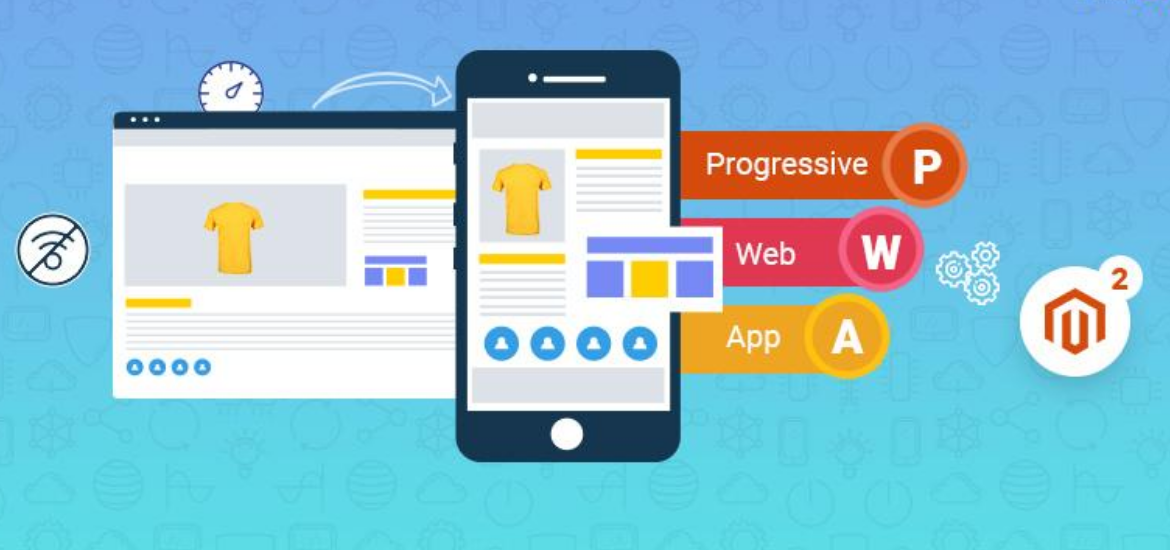
You can quickly transform the function into a potent sales-generating tool by notifying users of promotional deals and holiday-season discounts, reassuring them of the items in their shopping basket, and encouraging them to place orders before they sell out.
Increasing Conversion Rate
Magento PWA offers benefits to businesses that cannot be achieved with a traditional mobile website. It can help enhance conversion rates due to its faster loading speed, offline functionality, and cross-device compatibility. With PWA Magento 2, visitors do not have to wait for the entire page to load before they can view the content. This helps reduce the bounce rate and improves the overall user experience. Furthermore, Magento PWA can also benefit businesses by enabling them to deliver a consistent experience across all devices, allowing users to access their website whether they are on the desktop or mobile.
What are Magento PWA Requirements?
Service Workers
Service workers are an important Magento PWA requirement. They provide an intermediary between web applications, the browser, and the network (when available). This allows developers to control how network requests from within their application are handled, both in terms of which resources are cached for offline use and how they interact with other components of the application.
The requirement also allows developers to intercept network requests and manipulate the response, such as by adding headers or providing a custom response body. Magento 2 PWA supports service workers, allowing developers to use them in their Magento-based applications.
Web App Manifest
The Magento PWA requirement asks that you write a Web app manifest. This is a basic JSON file to define how your Magento 2 PWA will appear and behave when installed on the home screen of a device or added to an app launcher. It should include information such as the name of your Magento 2 PWA, icons, display mode, background color, and more.

It is essential to define these details correctly for Magento 2 PWA to work correctly. This requirement must be fulfilled before your PWA is ready to launch. If you need assistance with creating this manifest file, there are tutorials online and Magento experts available who can help guide you through the process. Ultimately, having a Web app manifest is essential for Magento PWA to work properly and launch without any issues.
App Shell Architecture
App shell architecture is a crucial component of Magento PWA requirements. This structure is an HTML, CSS, and JavaScript static page. It provides the basic framework for Magento’s PWA strategy, allowing Magento to leverage web application technologies such as service workers and app manifests.
App shell architecture enables Magento to provide users with an app-like experience within the Magento PWA, thus facilitating improved performance and better user engagement. It also helps Magento deliver a native mobile app experience on any device or platform that supports Magento progressive web apps.
Transport Layer Security (TLS)
Magento PWA requires the Transport Layer Security (TLS) protocol. Magento PWA is built on Magento 2 and therefore inherits many of Magento 2’s security features, including TLS. PWA for Magento websites also supports modern web encryption protocols such as TLS 1.2 or higher for all connections to ensure maximum security for your Magento PWA storefront.

Magento PWA also supports other security measures such as HTTPS, content security policies, secure cookies, and more to further protect your Magento PWA storefront. By enforcing TLS protocol requirements in Magento PWA, you can rest assured that your Magento PWA store is well-protected against potential cyber threats.
Application Programming Interface (API)
Application programming interface (API) is a crucial requirement for Magento PWA. Magento APIs enable integration between systems and provide access to web services and data in Magento stores. Magento APIs are mainly used by developers to build robust Magento applications, websites, portals, and mobile applications.

The Magento 2 PWA Studio provides several Magento APIs to facilitate the development of Magento Progressive Web Apps. These APIs enable developers to access Magento data, implement Magento functionalities, and publish Magento PWA apps.
The Magento 2 PWA Studio includes GraphQL interfaces that allow developers to create custom queries and retrieve only the information they need from Magento. Magento also provides Magento Rest APIs to developers who need to create custom applications and web services for Magento 2 stores.
Which Website Should Migrate Magento PWA?
Slow-Loading Websites
Slow-loading websites can be an incredibly frustrating experience for customers and it can also be detrimental to businesses. Magento PWA technology provides a great solution to this problem as it enables faster loading speeds, while still giving users the same rich experience they expect from webpages.

Magento PWA technology is built upon existing web technologies such as JavaScript and HTML, but the advantage it provides is a faster loading time. It works by pre-loading data that can be used for future requests, meaning customers don’t have to wait for information to load each time they visit the website. This makes browsing more efficient and enjoyable for users as well as provides businesses with an opportunity to increase user engagement.
The technology also delivers a consistent and optimized user experience, no matter what device or platform is being used. This ensures that customers get a great seamless experience when they access the website from a laptop, mobile phone, or tablet.
Mobile-Driven Traffic Websites
Websites that are designed to reach mobile users and have heavy-mobile driven traffic should consider integrating Magento PWA development technology. Online mobile shopping is becoming more and more popular and has transformed consumer behavior and evolved into the main internet purchasing channel.

Magento PWAs enable businesses to quickly and efficiently develop web applications or mobile applications that provide customers with an improved user experience. Customers are more likely to recognize your brand and make a purchase when they find your page interesting, therefore, it improves sales at your online store and enhances traffic.
Low Ranking Websites
Websites with low rankings should integrate Magento PWA technology. Magento PWA is a powerful development tool that allows businesses to create highly optimized mobile and web applications.
Additionally, it enables businesses to improve their website ranking by providing a responsive and optimized web experience for their customers. Customers will undoubtedly spend more time on your website which will improve its rating.
Offline Mode Targeting Websites
Magento PWA allows websites to deliver a unique and engaging experience for customers even when they are offline. By using Magento PWA, businesses can develop highly responsive websites that run smoothly in an offline mode, ensuring their customers can access essential services without interruption.
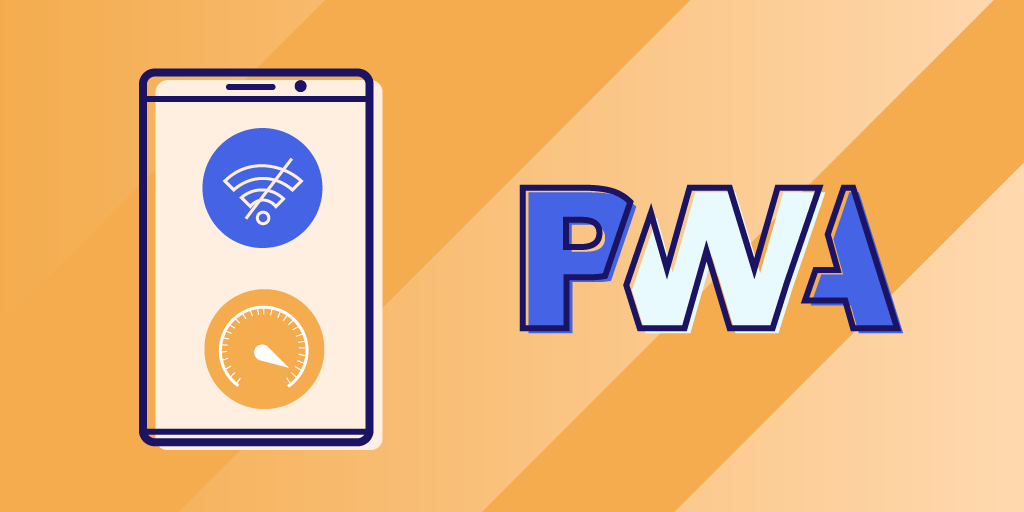
Additionally, Magento PWAs are highly scalable, meaning websites can be easily modified and upgraded to meet customer needs. With Magento PWA development, businesses can take advantage of a powerful platform for website optimization as well as an efficient method for delivering content that is accessible both online and offline. By leveraging this technology, businesses can optimize their customer experience while also improving engagement and boosting conversions.
Websites Aimed To Develop Native Apps With A Limited Budget
Websites owners who desire to develop native apps with a limited budget should integrate Magento PWA technology. This open-source framework allows website owners to create and maintain progressive web applications, offering the same user experience as a native mobile app while significantly reducing development time and cost.
Spending a lot of money on native app development is required for both Android and iOS, you must have a unique app. Any feature updates necessitate independent investigation and development across two platforms. Additionally, in-app purchases require program owners to pay a fee to the app shops.
In contrast, you can get an engaging, app-like experience from PWA technology for a reasonable price. The Magento PWA enables streamlined development of PWAs, allowing developers to quickly build and deploy dynamic Magento PWAs with features such as integration with the Magento order management system, automated deployment tools, real-time updates, and offline capabilities.
How To Build A Magento PWA?
When building a Magento 2 PWA, there are three options that you should consider.
Building a PWA from scratch with Magento PWA Studio
The PWA storefront for the Magento 2 websites may now be developed, deployed, and maintained thanks to Magento’s introduction of the Magento 2.3 PWA studio. It is a collection of tools for developers that enables the creation, upkeep, and deployment of the PWA storefront. It is dependent on contemporary tools and libraries to produce a framework and build a system that adheres to the extensibility concept. With Magento PWA Studio, developers can quickly build PWAs with a modern UI, high performance, and an improved user experience.
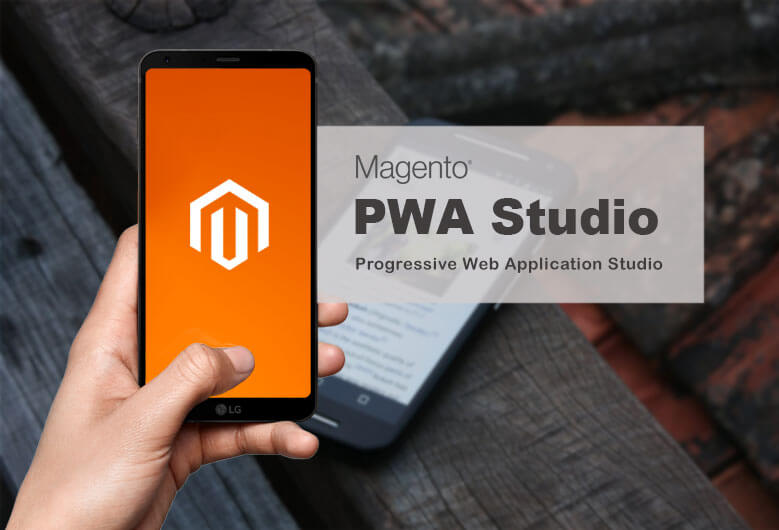
When building a Magento PWA from scratch using Magento 2 PWA Studio, developers can expect a few pros and cons. Creating your PWA from scratch with Magento 2 PWA Studio is a more complete solution than the available Magento 2 PWA extensions. Your current Magento storefront will be replaced with a PWA storefront that connects to your backend through API. In addition, you can need sophisticated development to give your website features that are quite effective.
However, there are also some drawbacks when using Magento 2 PWA Studio for developing Magento PWAs from scratch. This tool is relatively new and can require a steep learning curve for new developers. Additionally, Magento PWAs are only supported on certain browsers, so it is important to be aware of the limitations associated with this technology when developing Magento PWAs from scratch.
Overall, using Magento 2 PWA Studio provides a powerful and effective way to build Magento PWAs from scratch. Despite some of the challenges associated with Magento PWAs, developers can take advantage of the improved performance and scalability that comes with this technology. By leveraging Magento 2 PWA Studio to its fullest potential, developers can create Magento PWAs from scratch that provides customers with an optimized shopping experience.
There are 2 other main methods to build PWAs for business, however, it is developed based on the existing Magento platform. We will demonstrate detailed information about the two methods below.
Installing Magento 2 PWA Extensions
Installing the Magento 2 PWA extensions from various vendors is one of the finest ways to add sophisticated web app functionality to the present Magento website. You can pick between the free and paid versions based on your budget.

An added benefit of Magento PWA extensions is that they are built on top of the Magento platform, meaning there is no need to completely rebuild your Magento store. Instead, Magento PWA extensions provide tools and features to extend existing Magento stores to make their progressive web apps. This can save you time and money in the long run.
However, Magento PWA extensions are not without their downsides. For example, they can be difficult to install and maintain due to their complexity. In addition, Magento PWAs may not work as expected on certain browsers or devices if they are not properly tested and configured. Additionally, Magento PWAs require a certain level of technical knowledge to ensure that your Magento store remains secure.
Overall, installing Magento PWA extensions can be a great way to build PWAs for your Magento store. They provide tools and features to extend existing Magento stores to make their progressive web apps without the need for a full site rebuild. However, Magento PWA extensions require technical knowledge and may be difficult to install and maintain. It is important to weigh the pros and cons of Magento PWAs before deciding if they are right for your Magento store.
Using Magento 2 PWA Themes/ Templates
Magento PWA themes and templates can be a great option for businesses with existing Magento platforms that are looking to create modern websites quickly and affordably. These themes and templates are already optimized for mobile devices, so no additional work needs to be done by the business. They also come with various features such as push notifications, offline access, and analytics that can help businesses better understand their customers.
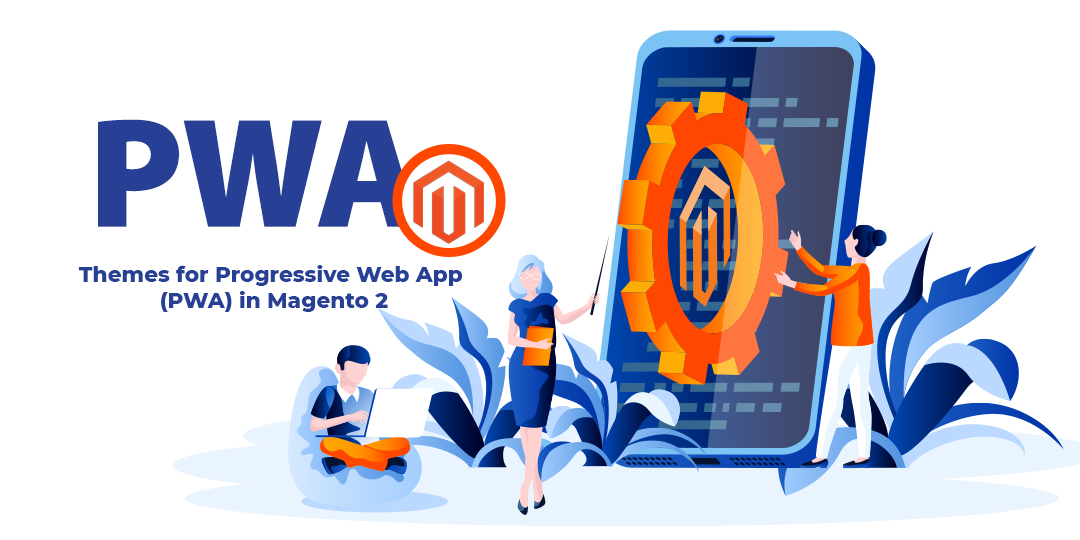
However, there are also some drawbacks to using Magento PWA themes and templates. For one, they can be difficult to customize and update without the help of expert developers. Additionally, businesses may need to pay for certain features or add-ons that could increase their costs over time. Finally, if a business is looking for specific features or functionality, it may need to look for other solutions as these themes and templates may not provide the desired features.
If your business is desiring to develop a PWA, check out our Magento PWA 2 development service right now!
How Much Does It Cost to Build a Magento PWA?
PWA Extensions
From the initial judgment, choosing PWA extensions might be the least expensive option. But in fact, it is the most expensive method. Each extension has specific features and the distinct feature can cause businesses to buy and install numerous extensions for the number of features and functionality needed for their website. In the long run, website owners will have to pay much more money than anticipation since they have to purchase and install more extensions.
PWA Themes
The cost of Magento PWA themes varies greatly, depending on the complexity and scope of the themes. Generally, Magento PWA themes are more costly than standard Magento themes due to the additional time and resources spent developing them. The cost will also depend on the number of features included in the theme, such as custom designs or layouts, as well as the number of customization options available.

Free themes are offered by several Magento PWA developers, but you can only use them if you have technical expertise.
Paid Magento PWA themes can cost anywhere between $5,000 and $50,000+. Depending on the intricacy and the service provider, customization may or may not incur additional costs.
Using PWA Studio
To create your PWA from scratch, you must employ developers with extensive knowledge in both Magento 2 and PWA. Preparing a generous budget for highly experienced developers to create and maintain the site from the initial makes you assume this option is the most expensive. However, in the long run, the PWA studio will be less costly than PWA extensions as businesses don’t have to install many more extensions.
In conclusion,
Magento PWA is an innovative technology that can help businesses create powerful web applications with features and functionality previously only available via native apps. It offers many benefits such as improved speed of development, better customer experience, and faster loading times. Additionally, Magento PWA requires a few important elements that businesses should consider.
Finally, Magento PWA can be implemented at an affordable cost and offers many benefits for businesses of all sizes. With Magento PWA, businesses can create powerful web applications that provide an excellent customer experience and help them to stay ahead of the competition. Talk to our experts now to stay ahead of the trend of the best eCommerce experience with Magento PWA.











